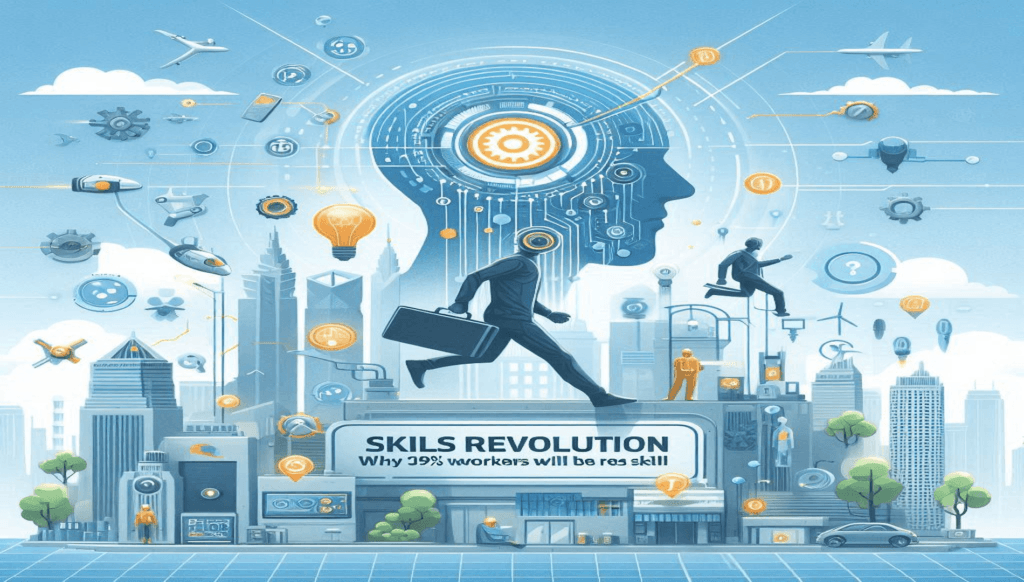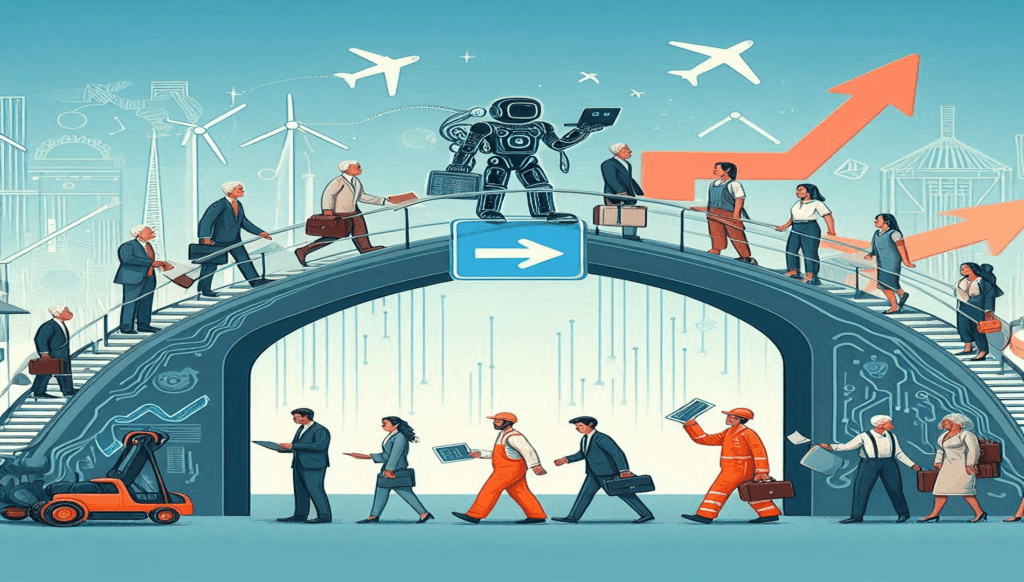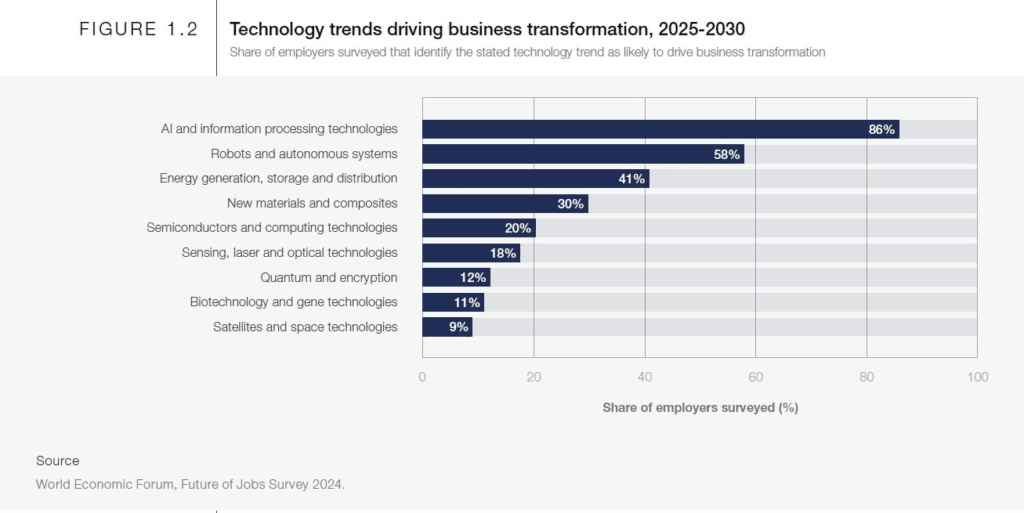
As we enter 2025, a year shaped by rapid advancements in artificial intelligence (AI) and digital transformation, a critical question arises: Are India’s fresh graduates equipped to thrive in an AI-driven workplace? Mercer | Mettl’s “India’s Graduate Skill Index 2025” provides an in-depth look at the state of graduate employability in India, highlighting key trends and insights essential for educators, industry leaders, policymakers, and graduates alike.
The Current Landscape of Graduate Employability in India 2025
Despite global economic shifts and hiring slowdowns in 2023-24, graduate employability in India remains relatively stable at 42.6% in 2024, a slight dip from 44.3% in 2023. Notably, while technical role employability has increased, non-technical skills employability has declined. This shift underscores evolving employer priorities, especially with AI taking over routine tasks and increasing demand for specialized skills.
The report, based on data from over 1 million students across 2,700+ campuses and assessments of 2,800+ skills, reveals that today’s employers seek a blend of technical expertise, non-technical abilities, and crucial soft skills. Simply possessing theoretical knowledge is no longer sufficient; graduates must demonstrate adaptability and the ability to apply their skills in real-world, digitally evolving environments.
Graduate Employability India 2025: Technical vs. Non-Technical Skills: A Changing Dynamic
Technical Roles:
Employability in top technical job roles stands at 42.0%, with AI & ML leading at 46.1%, reflecting the growing demand for these skills. Other promising fields include UI/UX development (44.7%) and software testing (42.8%). However, areas like data science (39.8%) and back-end development lag, highlighting the need for targeted upskilling.
Non-Technical Roles:
Employability in non-technical roles has declined from 48.3% in 2023 to 43.5% in 2024. Financial analysis (45.4%) and sales & business development (45.3%) roles show the highest employability, whereas HR associates lag at 39.9%. This decline could indicate a shifting industry focus or a gap between graduate skillsets and employer expectations in an AI-enhanced landscape.
Graduate Employability India 2025: Gender Dynamics in Employability
The employability gap between male (43.4%) and female (41.7%) graduates remains marginal, but noteworthy variations exist within specific job roles. Encouragingly, AI & ML and data science roles exhibit gender parity, while disparities persist in software testing. Interestingly, female graduates outperform their male counterparts in digital marketing and HR roles, showcasing their strengths in people-centric and creative fields.
As organizations strive for more diverse workforces, these gender-based employability trends can inform targeted efforts to bridge existing gaps and promote equitable opportunities.
Graduate Employability India 2025: The Influence of College Tier on Employability
Institutional reputation plays a significant role in employability outcomes:
Tier 1 Colleges:
Highest employability at 48.4%, with strong performance in both technical (46.4%) and non-technical (51.1%) roles.
Tier 2 Colleges:
46.1% employability, but saw the sharpest decline in non-technical role readiness compared to 2023.
Tier 3 Colleges:
43.4% employability, with notable strengths in foundational skills and specific technical domains like software testing and QA automation.
Despite these trends, specialized roles such as UI/UX development show higher employability in Tier 2 colleges (58.3%), highlighting the growing relevance of niche skills beyond traditional elite institutions.
Graduate Employability India 2025: Regional Variations in Employability
Employability rates vary significantly across states:
Highest Employability:
Delhi (53.4%), followed by Himachal Pradesh and Punjab (51.1%). These states benefit from strong educational infrastructure and industry collaborations.
Technical Role Leaders:
Delhi leads with 52.6% employability.
Non-Technical Role Leaders:
Himachal Pradesh and Punjab top the list at 54.3%.
The rise of Tier 2 and Tier 3 cities as talent hubs, driven by remote work, skill development programs, and digital job opportunities, is reducing regional employability disparities.
Graduate Employability India 2025: The Rising Importance of Soft Skills
With AI increasingly automating routine tasks, soft skills have become a major employability differentiator. The report reveals that 50% of graduates possess strong soft skills crucial for working alongside AI-driven tools.
Top Soft Skills:
Communication (55.1%), critical thinking (54.6%), and leadership (54.2%) rank highest.
Skills Needing Improvement:
Creativity (44.3%) and learning agility (46%) lag behind, yet are vital for long-term career adaptability in an AI-enhanced job market.
Employers are prioritizing candidates who can think critically, collaborate effectively, and adapt to evolving industry needs—capabilities that AI cannot replicate.
Graduate Employability India 2025: The Road Ahead: Preparing for the AI-Driven Job Market
The “India’s Graduate Skill Index 2025” underscores the need for a collaborative approach to enhance employability. Key stakeholders must take action:
Educational Institutions:
Align curricula with evolving industry demands, integrating technical, non-technical, and soft skills training.
Industry Leaders:
Partner with academia to provide real-world exposure through internships, training programs, and mentorship.
Policymakers:
Foster a robust skill development ecosystem to bridge gaps and promote lifelong learning.
Graduates:
Embrace continuous learning, upskilling, and adaptability to remain competitive in an AI-driven workforce.
Here’s What I Think:
India’s graduate employability landscape in 2025 is at a crucial juncture. While overall employability has remained stable, deeper analysis reveals significant shifts in skill demand, gender trends, institutional strengths, and regional variations. AI’s growing influence is not only shaping technical skill requirements but also amplifying the importance of human-centric soft skills.
To ensure a future-ready workforce, a holistic strategy is essential—one that fosters adaptability promotes continuous learning and balances technical expertise with strong interpersonal capabilities. With strategic interventions from educators, industry leaders, and policymakers, India’s graduates can successfully navigate and excel in the AI-driven job market of tomorrow.
What are your thoughts on the future of graduate employability in India? Share your insights in the comments below!
Sources of Insights
Mercer | Mettl’s : “India’s Graduate Skill Index 2025″

Ajay Dhage is a seasoned Talent Acquisition leader with over 20 years of experience in recruitment and workforce strategy. Currently serving as the Talent Acquisition Lead for a global Oil & Gas EPC Company in India, ajay oversees the entire talent acquisition lifecycle across diverse and complex projects, from sourcing to onboarding and aligning top talent with complex organizational goals. With a proven track record in industries such as oil and gas, EPC, and renewables, he brings a customer-focused approach and innovative mindset to every project.
Through ajayable.com, ajay aims to share insights, trends, and strategies to empower HR professionals, Organizations and recruiters to excel in a competitive talent landscape.














